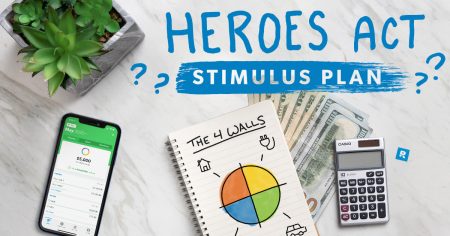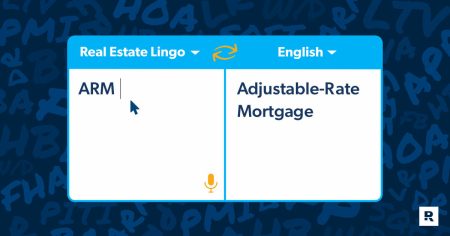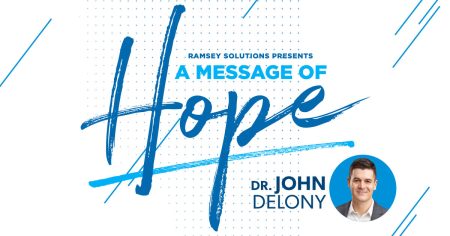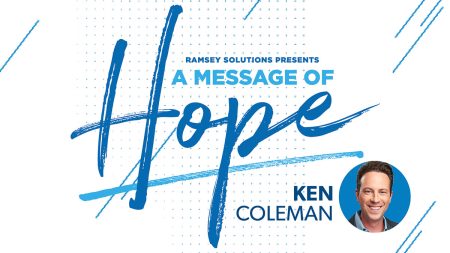After a few weeks of back-and-forth, President Joe Biden’s American Rescue Plan became a reality in March 2021—and with it came a third stimulus check hitting Americans’ bank accounts. But the American Rescue Plan had a lot more stuff in it than just the stimulus checks. The Biden administration called the plan an emergency legislative package to help the country bounce back from the COVID-19 crisis, and it included a lot of the policies Biden campaigned on too.
But how does all of that affect you? Let’s take a look at how these changes from the American Rescue Plan impact your wallet.
What Did the American Rescue Plan Do?
The American Rescue Plan came with a huge price tag of $1.9 trillion to spend on (among other things) sending out stimulus direct payments, upping the Child Tax Credit, extending bonus unemployment benefits until September 2021, expanding the Child and Dependent Care Credit, and offering rental assistance.1,2
Yeah, that’s a mouthful. Let’s walk you thought some of the heavy hitters from the American Rescue Plan.
It Revised the Child Tax Credit
If you have kids, listen up—the Child Tax Credit got a major bump. The American Rescue Plan not only increases the amount of the credit, it also makes big changes in how parents will receive it.
Normally, parents can receive a maximum tax credit of $2,000 for each qualifying child under age 17. If the parents owe income taxes, the credit reduces their tax bill dollar for dollar. The usual Child Tax Credit is also partially refundable, so if the amount of the credit is more than the taxes they owe, parents can get a refund of up to 15% of the household’s income above $2,500 (figuring that out requires some weird math).3
Under the American Rescue Plan, the Child Tax Credit bumps up to $3,000 for children ages 6–17 and $3,600 for children under age 6. It’s also fully refundable—no more weird math! (Well, at least not for the refund.)4
So, for a family with three children, ages 12, 8 and 5, and a household income of $75,000 a year, their usual Child Tax Credit would be $6,000. And even with the weird math, they could get a refund for the full amount. Under Biden’s American Rescue Plan, that same family would get a $9,600, fully refundable credit.
But instead of applying the full amount of the credit to income taxes they might owe or getting a refund after they file their taxes, parents get the credit up front in monthly payments of $250 per qualifying child ($300 for children under age 6). These credits from the IRS began rolling out in July 2021 and will end in December 2021. The change would be only for 2021 (for now)—but there’s support in Congress and the White House for making it a permanent deal for years to come.
What does that mean for you? Thanks to the American Rescue Plan, you could go ahead and get half the amount of the tax credit you’re eligible for (based on your 2019 or 2020 income) between July and December of 2021. Then, you’d claim the rest on your 2021 taxes.
If you receive the advance payments and it turns out you shouldn’t have because a child you claimed before is no longer your dependent, you’ll be spared from paying back up to $2,000 per child if you are a single taxpayer who makes less than $40,000 or a married couple who makes less than $60,000.
Taxes don’t have to overwhelm you. See what’s best for your situation—and services you can trust.
But what if you didn’t want the up-front credit? An online portal was created to let parents opt out of advance payments and report any changes in income, marital status or number of eligible children. You’d be responsible for keeping your information updated to avoid any surprises at tax time.
Those advance payments are a good way to keep more of your own money in your pocket throughout the year. And we’re a big fan of that—but only if it doesn’t create a tax bill for you when it comes time to file your 2021 taxes.
Check in with your tax pro who will be the best source of information on this new tax credit change. They’ll help you make the right call on how or if you should accept the advance payments, and how best to plan your taxes so you don’t end up with a big bill or a crazy-high refund.
It Expanded the Child and Dependent Care Credit
The Child and Dependent Care Tax Credit expanded to help families with expenses like day care for kids under 13. Before, the maximum credit was $3,000 ($6,000 for multiple dependents) for qualified expenses. Congress decided to raise the max to $8,000 ($16,000 for multiple dependents) and increase the maximum amount you could be reimbursed from 35% to 50%.5
The changes make more people eligible for the credit, too, by raising the income limit for the full amount from $15,000 to $125,000. Taxpayers making between $125,000 and $400,000 would be eligible for a partial credit.6
Another bonus—the credit will become fully refundable, meaning parents could get a refund for the credit even if their tax bill is zero.
What does that mean for you? In real life, that means a family paying $30,000 a year for day care for two kids would see their Child and Dependent Care Tax Credit go from $6,000 to $15,000. But just like the changes to the Child Tax Credit, these updates are only for 2021 (for right now).
It Continued the Ban on Evictions and Provided Additional Renter’s Assistance
In one of his first acts as president, Joe Biden extended the freeze on evictions that Congress first passed in March 2020 under the CARES Act. The extension continued the ban on evictions for people who can’t pay their rent because of job loss or a drop in income due to the COVID-19 pandemic.
While the ban on evictions helped many renters stay in their homes, it didn’t help them with any back rent they owed in the meantime. In December 2020, Congress approved $25 billion in emergency renter’s assistance to help renters and landlords cover their housing costs. The American Rescue Plan piled another $30 billion on top of that and keep the aid coming to cover unpaid rent, utilities and other fees.7 The new funding extended the national program until it expired in September 2021.8
What does that mean for you? The national freeze on evictions and rental assistance has ended, but you might be one of the people still struggling to pay rent each month. How can you keep a roof over your head now? Here’s our take:
Some states are still offering a freeze on evictions (and utilities), so check what’s happening at your local level.9 Rent is one of your Four Walls (food, utilities, shelter, transportation), which means it’s one of the four most important things you need to pay each month in order to keep on surviving. So if you need the help to keep a roof over your head, take it. That will lift at least part of the burden and clear your mind so you can make plans to find work and get your income back up.
In the meantime, throw whatever money you have at keeping your Four Walls paid for. Everything else can wait. Focus on that until your income is stable and you can build up your savings and move on to the Baby Steps.
Getting behind on your rent, losing your job, or losing income isn’t just a blow to your budget—it can steal your hope that things will ever get better. But a solid plan can make all the difference. You just need to know where to start. Take three minutes to answer a few questions, and you’ll know exactly where you are with your money—and how to get to where you want to be.
It Provided a Homeowner Stimulus
Part of the money from the American Rescue Plan ($10 billion, to be exact) was set aside to be used for the Homeowners Assistance Fund—aka a homeowner stimulus of sorts.10 The Homeowners Assistance Fund lends a hand to homeowners who are struggling to cover their mortgage month after month. It helps them pay for their mortgage and avoid late payments and foreclosures.
What does that mean for you? You can apply for this homeowner stimulus relief if you’ve gone through financial hardship of some kind since January 2020 (like losing your job, making less money, etc.). You’ll also need to meet the income limits and have a remaining mortgage loan balance of $548,250 or less.11
It Continued the Boosted Unemployment Benefits Through September 2021
With the passage of the American Rescue Plan, people who were receiving unemployment benefits continued to get the beefed-up payments—$300 a week on top of the regular benefit—but it ended on September 6, 2021.12 Yep, that’s right. The extra unemployment benefits ended on Labor Day—oh, the irony.
The plan also extended federal unemployment programs created in response to the job losses caused by the pandemic in two ways:
On top of boosting benefits and making them available for longer, the new law made the first $10,200 in unemployment benefits tax-free for people with an income of less than $150,000.13 But the tax break only applies to unemployment you received in 2020. So if you’ve already filed your 2020 taxes or you opted to have income taxes taken out of your unemployment benefits when you received them, look for the IRS to give you instructions on how to take advantage of this tax break.
What does that mean for you? The extended unemployment checks have ended, but depending on when you first filed, you might still qualify for the “regular” amount if you’re still unemployed. You can double-check with your local unemployment office to see where you stand now.
We know, you’d rather have a job than an unemployment check, but don’t let yourself get discouraged here. Keep applying for all the jobs out there and sprucing up your resumé. If you need extra cash while you’re in between jobs, there are a ton of ways to make extra money—you just have to know where to look.
It Didn’t Raise the Minimum Wage
There were talks this might get pushed through, but that’s all it was—talk. The plan almost included an increase to the minimum wage, that is, until a Senate official said, “No can do.” That’s because lawmakers moved the bill through using a process called “reconciliation”—and that requires it to have a budget impact. The Senate’s chief parliamentarian (fancy name for a person whose job it is to make sure lawmakers follow the rules), said the minimum wage plan didn’t meet that requirement, so it couldn’t be voted on.14 And the rest is history—raising the minimum wage didn’t make the cut when it came to the final version of the American Rescue Plan.
That doesn’t mean lawmakers will give up on the plan though. The federal minimum wage has been $7.25 an hour for more than a decade, and President Biden and many in Congress say that needs to change to help the U.S. recover from the impact of the COVID-19 pandemic.15 So, lawmakers could try to find another way to grow the minimum wage to $15 sometime later on down the road.
What does that mean for you? We won’t sugarcoat it—living on the current minimum wage is tough. It’s not surprising that workers making minimum wage right now would get excited about a possible change. But if the plan ever does go into effect, it won’t be all sunshine and roses. Expect fewer hours—even fewer entry-level jobs—while businesses absorb the impact of the increase to their bottom line.
If you’re making minimum wage, or any income you’re not happy about, there’s no need to wait on the government to solve that for you. (Clearly, you could be waiting a long time!) You have the option to find a better-paying job today. Ken Coleman has been helping people figure out what role they were meant for—and how to land their dream job—for years through his daily show and his book, The Proximity Principle.
You can learn how to build up your skills and make yourself more marketable for jobs in your area. That will put you on the road to better opportunities and higher income throughout your career.
Your Real Rescue Plan
Whew! You still with us? That’s enough legislation jargon, numbers and facts to sink a battleship. And even though the American Rescue Plan represents a lot of change and a lot (a lot) of taxpayer money—our advice is still the same:
The answers to your money problems will not come from Washington, D.C.—ever. No matter your situation, you have the power to improve it—whether you’re drowning in debt, have lost your job, or you just want a more secure financial future for yourself and your family. Ramsey+ has everything you need to learn how to pay off debt, save money, and build wealth—including our heavy hitters like Financial Peace University and EveryDollar. It’s helped millions of people have hope for their money situation, and the best part is, you can check it out today with a free trial—no government rescue plan needed.
Read the full article here










